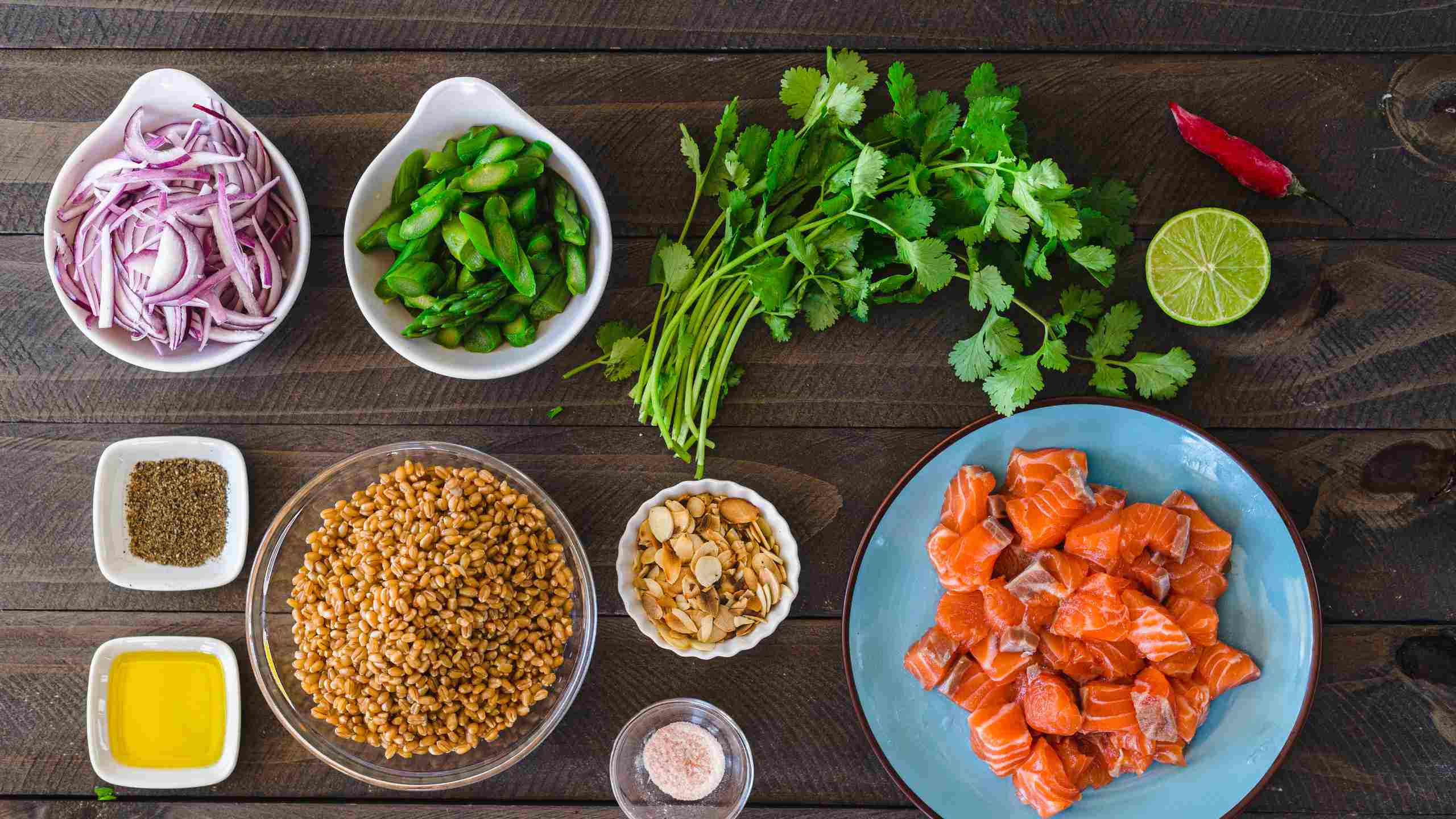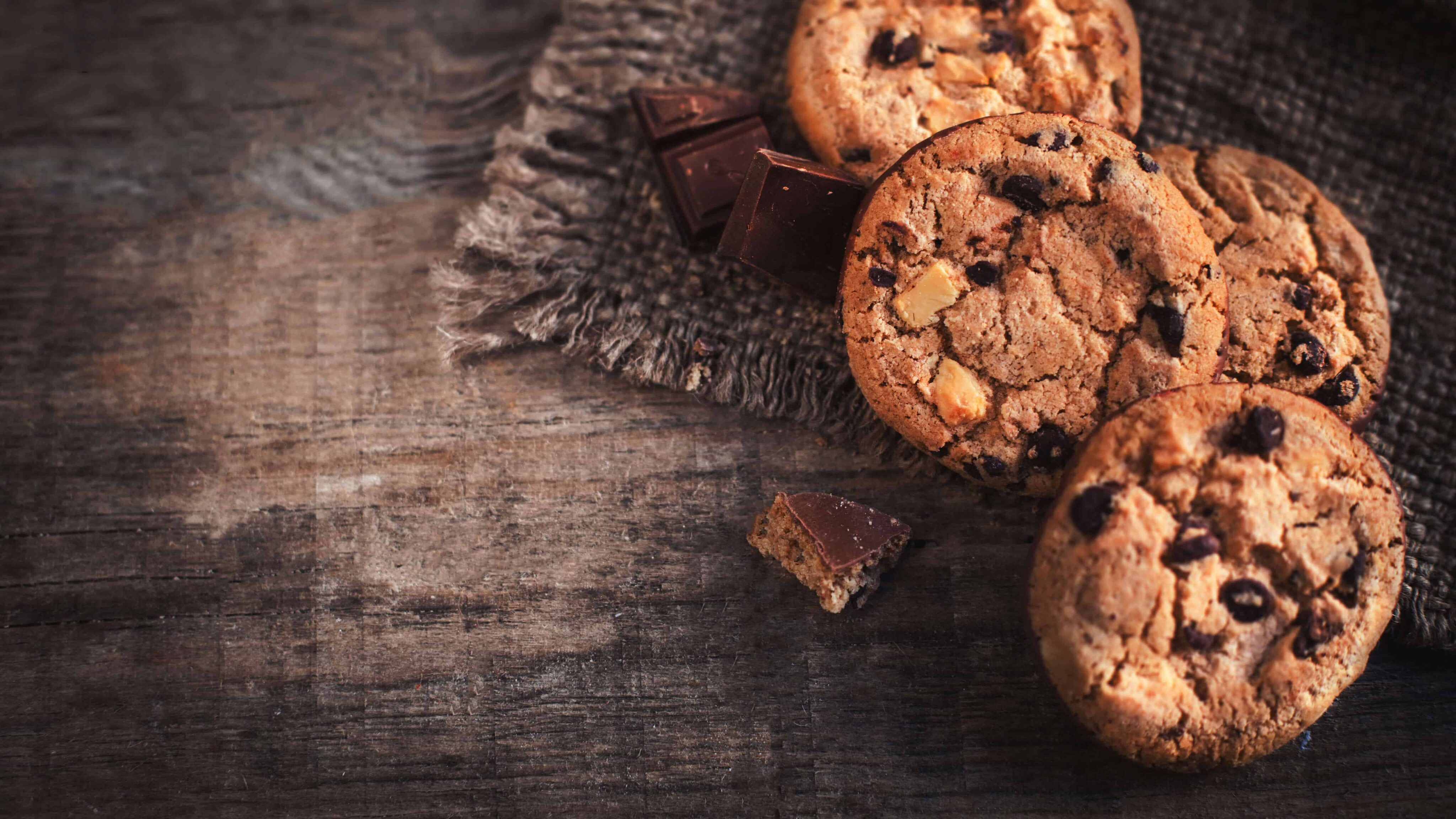Food waste? What a waste!
Did you know that about 1/3 of all food produced in the world is lost or wasted? Avoiding food waste is crucial for household and family finances and it also has positive effects on the environment – globally, food waste accounts for 8% to 10% of greenhouse gas emissions.
In 2020, each inhabitant of the European Union (EU) wasted an average of 127 kg of food.
These 127 kg of food waste per capita in the EU are divided as follows:
- 70 kg – families
- 23 kg – food and beverage production industry
- 14 kg – primary production
- 12 kg – restaurants and food services
- 9 kg – food retail
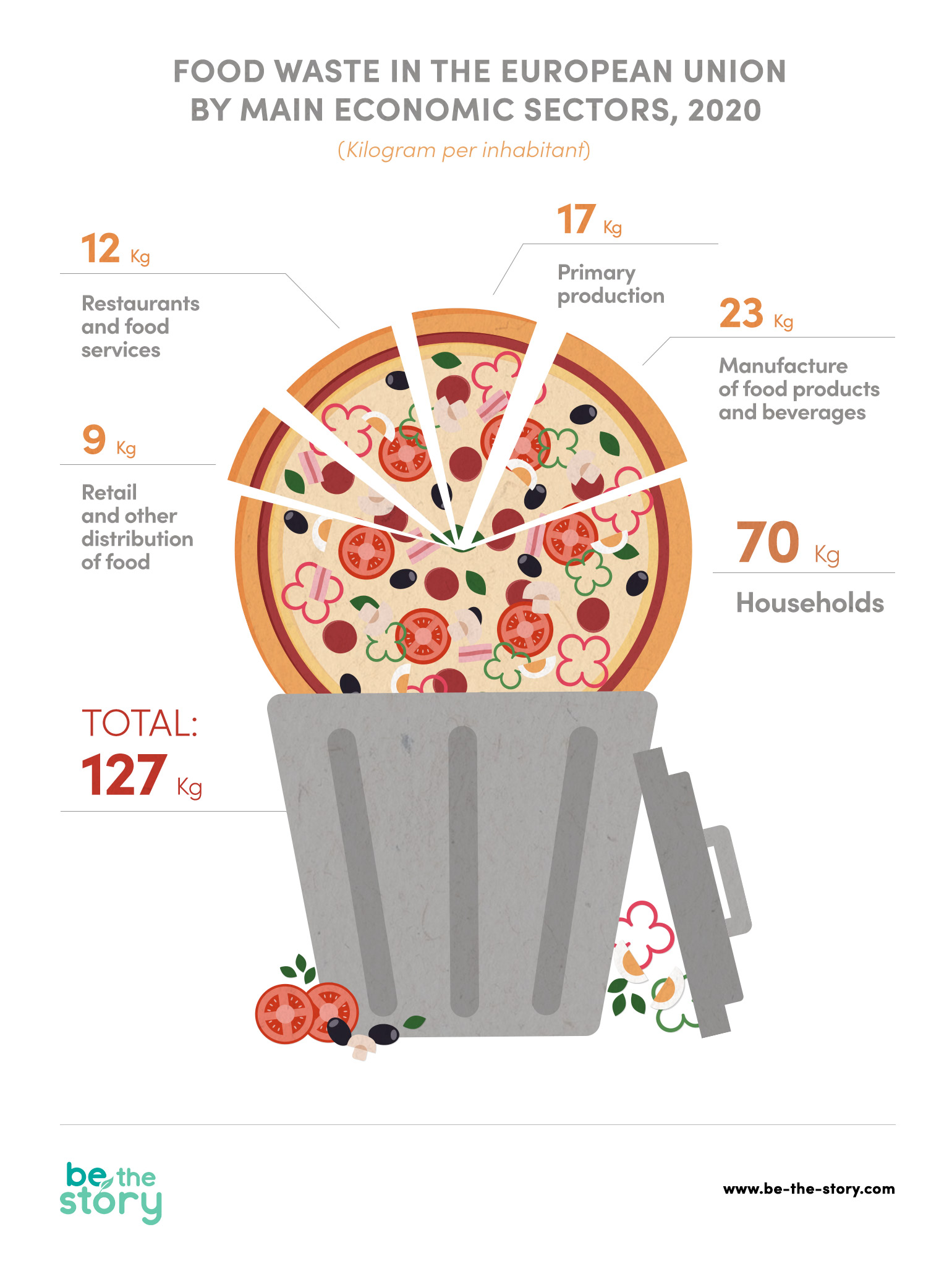
Source: ec.europa.eu/eurostat. Belgium, Latvia, Malta and Romania: data not available. Czechia, Lithuania, Portugal and Sweden: data are estimated. Cyprus: definition differs (see metadata). Consequently, EU aggregates are estimated.
To help address this problem, there is now a clever and innovative project, born in the UK. Meet the Yellow Sticker Cookbook project.
Fighting food waste with yellow stickers
In the United Kingdom, food products approaching the end of their shelf life, or expiration date, are sold at reduced prices and marked with a yellow sticker. These are often called “reduced” items, and food quality is guaranteed.
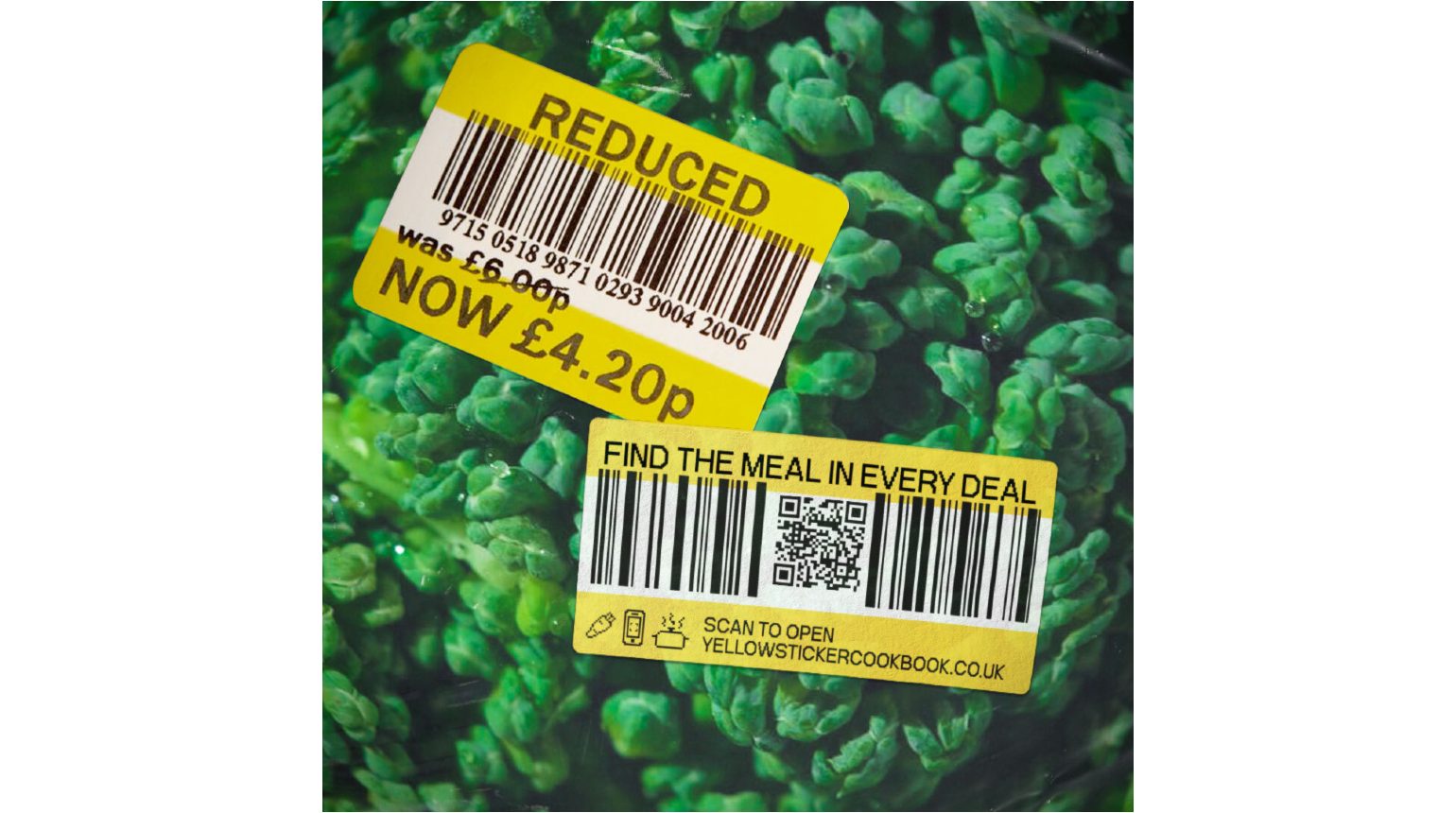
A “reduced” item with a yellow label indicating the price has been discounted from £6 to £4.20. (image courtesy of Uncommon Experience Studio Limited)
This measure has been adopted by a number of food retailers across the UK to standardise labels for products approaching their expiration date. Thus, whenever a consumer spots a yellow label, they know the product is approaching its expiration date and its price has been reduced.
Avoid food waste with creativity
Just because an item is discounted, or reduced, it does not automatically mean a customer wants to buy it, for a number of reasons. For instance, shoppers can mix up the “use by” and “best before” dates. It is very commonly – and wrongly – assumed that a food product approaching its expiration date is spoiled or stale, or even of lesser quality. If these two expressions cause you any confusion, take a look at this guide to understand the shelf life of food products at your local supermarket.
Another reason for the reluctance in buying reduced foods may be very simply a lack of ideas of what to cook with these ingredients – and fearing they’ll spoil before having a chance to cook it.
With this problem in mind, Yellow Sticker Cookbook developed an innovative search engine, which allows users to enter an ingredient and get thousands of delicious and practical recipes containing that ingredient in return. To make searching for a recipe even easier, there is an additional yellow sticker with a QR code and the phrase “Find the meal in every deal”. And that’s how the magic happens.
Recipes are just a photo way
The Yellow Sticker Cookbook offers consumers a quick and effortless way to find recipes by ingredient. In the shops that have partnered with the project, users can access these recipes simply by scanning the QR code with their smartphone. The QR code will redirect the user to a page filled with recipes starring that ingredient.
You can also use your smartphone to take a picture of the food with the yellow sticker on, and the platform will identify the food via AI, and redirect you to the recipe page. Alternatively, you can simply enter the name of the ingredient in the search bar, and let the app do the rest.
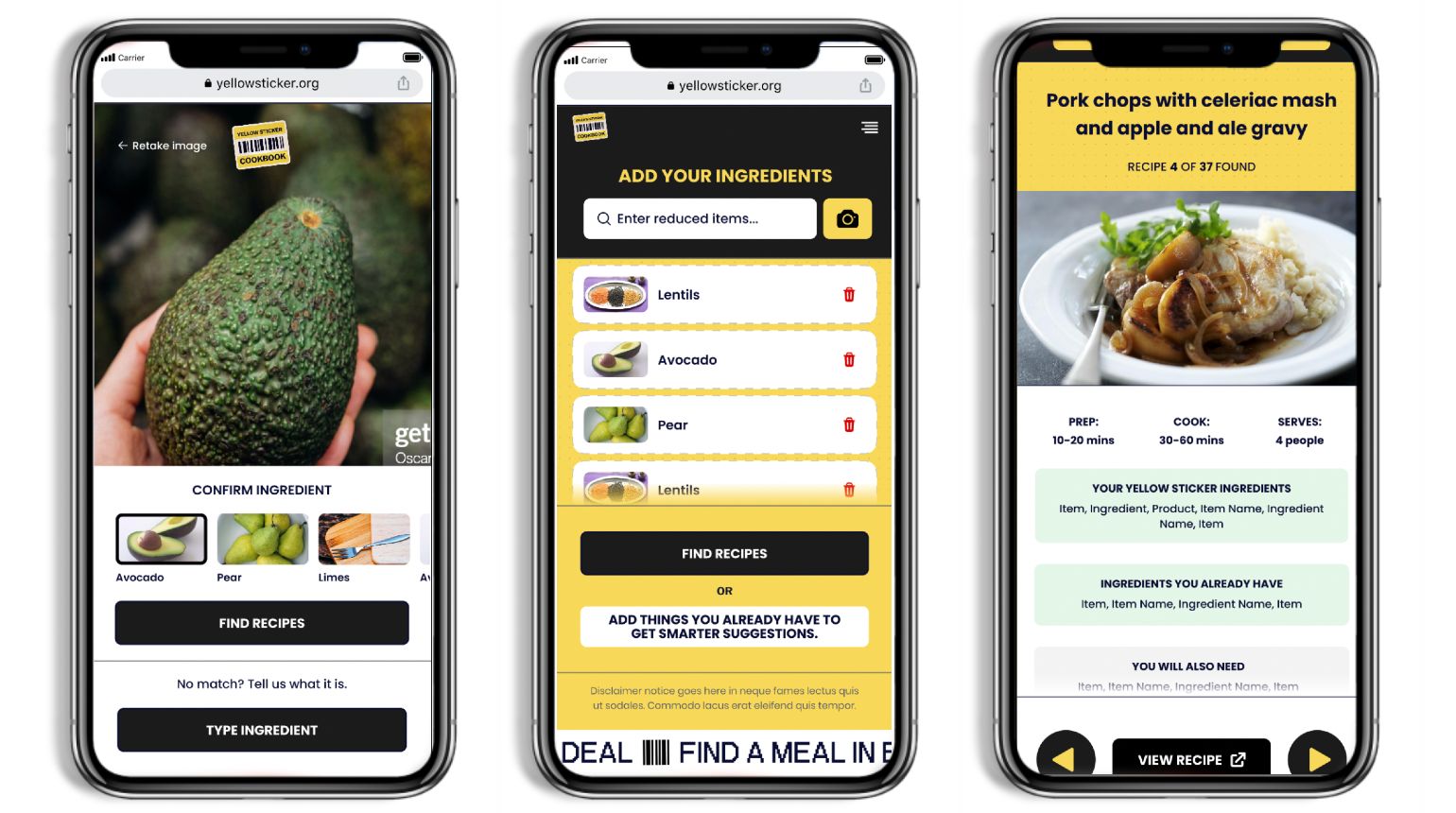
Ingredient search and recipe suggestions Yellow Sticker Cookbook. (image courtesy of Uncommon Experience Studio Limited)
Screen displaying a base ingredient (avocado) with a button to find related recipes; screen displaying a list of available ingredients (lentils, avocado, pear), selected by the user; and screen displaying a description of a recipe - pork chops with celery and apple purée and beer sauce.
Ideas for lunch, tea, and supper!
How many times have you opened the fridge and realised there is a full head of broccoli wilting and yellowing? Or uncovered long lost tomatoes? Maybe you found that aubergine you really wanted to use in a recipe, but don’t know how? Well, the good news is you can open the Yellow Sticker Cookbook website, type “broccoli”, “tomato”, “aubergine” or any other ingredient in the search bar and you’ll have hundreds of recipes just a click away.
If you find a less common ingredient, but have no idea how to use it, the Yellow Sticker Cookbook has the answer. Think, for example, a mysterious chayote, a big pumpkin or squash, a bag full of chestnuts or even the presumed-boring sweet potatoes. In addition to reducing food waste, you can diversify your diet.
You may not find these labels and yellow stickers outside the UK; however, the Yellow Sticker Cookbook website can be used wherever and whenever. Take advantage of your supermarket’s reduced items and get inspired by the recipes it will find for you.
There are many other ways to reduce waste in the kitchen. For example, by using parts of food that you would normally discard, such as potato peels or eggshells. You can also resort to ancestral techniques such as pickling, or even make use of everyone’s good old friend, the freezer.
See 9 more tips to avoid wasting food and don’t miss the episode 6 of our podcast “Fighting Food Waste” (in Portuguese).
